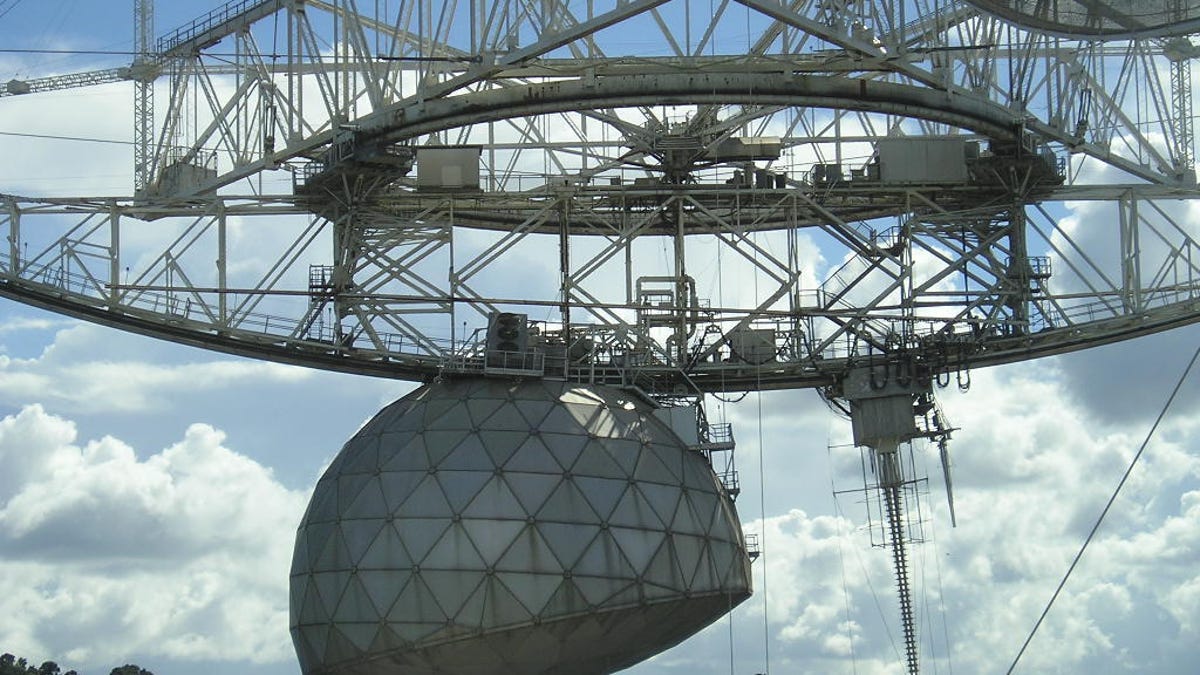Scientists investigating strange signals from nearby star
Unexplained radio transmissions from 11 light-years away are getting a closer listen from humanity's biggest ear.

The Arecibo radio telescope in Puerto Rico
The world's largest currently operating radio telescope on Sunday will be observing the nearby star Ross 128, which may be the origin of some very odd and inexplicable radio signals picked up in May.
The Arecibo Observatory in Puerto Rico will again target the red dwarf star, which is the 12th-closest to our sun at less than 11 light-years away, to gather more data that could eventually help solve the mystery.
Abel Mendez, a professor at the University of Puerto Rico at Arecibo's Planetary Habitability Laboratory, described the signals as "broadband quasi-periodic non-polarized pulses with very strong dispersion-like features." In a blog post this week, he suggested they could be caused by solar flares from Ross 128, by something else in the field of view or by a high orbit satellite.
"In case you are wondering, the recurrent aliens hypothesis is at the bottom of many other better explanations," Mendez adds.
But there are problems with each of the three leading explanations, he says. Solar flares aren't a great match for the frequencies and dispersion observed in the signals, there are few nearby objects in the field of view and satellites aren't known to emit such pulses.
So Arecibo will listen hard on Sunday for the strange signals and will also turn its massive ear to another nearby red dwarf, Barnard's Star.
Mendez jokes that he "has a piña colada ready to celebrate if the signals result to be astronomical in nature."
Meanwhile, alien hunters, sci-fi fans and gamers can continue to revel in speculation that the alien hypothesis cannot be 100 percent ruled out. After all, Ross 128 is also known as FI Virginis, the setting of numerous works of science fiction and even one old-school computer game some children of the 1990s may remember.
Crowd Control: A crowdsourced science fiction novel written by CNET readers.
Solving for XX: The tech industry seeks to overcome outdated ideas about "women in tech."

